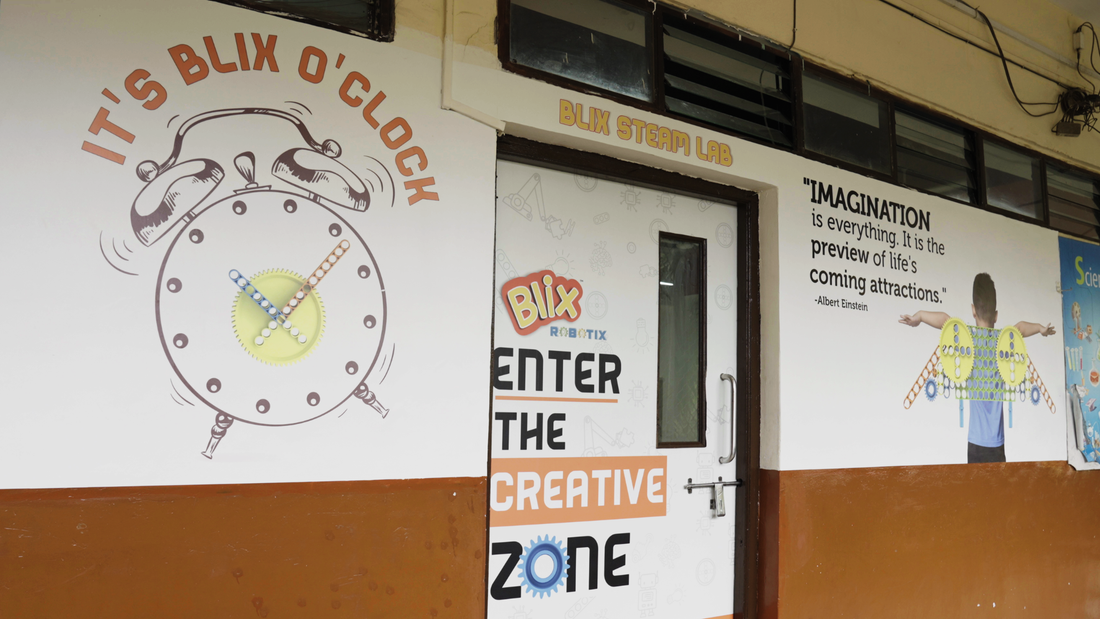
Why Did STEM Labs Become the New Normal in Schools?
Share

Not very long ago, schools kept a major focus on board exams, grades, and textbook chapters. STEM was seen as an “extra”. Maybe a fun workshop or a hobby project after school.
But NEP 2020 and NITI Aayog’s Atal Tinkering Lab initiative changed it all. And the shift was utterly dramatic. STEM then wasn’t just encouraged, it was expected. Schools were told: prepare children not just for exams but for the world of AI, robotics, and technology.
And with this, STEM labs became a need in schools, and not just a choice.
Why do schools see labs as essential today?
Let's think of a student who has always studied circuits from a diagram. Now imagine the same student actually wiring one. They see the bulb light up and tweak it to work better. That shift, from them reading the theory to doing, is what STEM labs unlock.
We at Blix have seen extreme shifts. While interacting with schools, we have understood that schools know the world is changing faster than ever. So, when they look at robotics lab setups in schools or STEM robotics curriculum, they aren’t thinking about just one project. They’re thinking about building problem solvers who will thrive 10 or 20 years from now.
What’s Blix’s Way of Setting Up a STEM Lab?
At Blix, we’ve worked with schools long enough to know that a lab is only useful if it actually runs. That’s why our motive is to not just deliver the kits but offer a complete system.
We offer the right kits to the right age group. Be it STEM educational toys for early grades to advanced robotic kits for schools, we map products to how children learn at each stage.
Our curriculum builds layer by layer. In the foundational years we try covering the concepts of motion and force. Next up, coding and logic is offered in applied stages.
We have seen one more thing, schools often fear labs will become unused corners. That's why we even offer quarterly audits, replacements, and upgrades, to make sure that doesn’t happen. In fact, at schools like Prabhat Scholars Academy school, our AMC even shaped our own R&D. There, we actually identified which parts needed better design for long-term classroom use.
Who Is Driving This Change Beyond Schools?
The rise of STEM labs isn’t just because schools decided it. Three forces made it possible:
- Government push through ATL and NEP created the framework.
- CSR in education opened opportunities for schools with fewer resources to set up labs.
- Private partners and NGOs filled the gaps. They connected schools to vendors like us who could deliver at scale.
This ecosystem has made sure that even smaller schools now think about STEM labs for students. Not as something that is good to have, but as a part of learning.
Where Do We Go From Here?
Today, the conversation is no longer whether a school needs a STEM lab. The question is, how advanced should it be?
With Blix’s AI/ML kits, schools can explore robotics as well as AI concepts for kids using STEM kits. Children can do both coding and make a robot move. They can learn how AI decisions are made, and why understanding the process matters.
Looking ahead, our mission is clear. We’ve already set up STEM and AI labs in many schools, and this year, we are on track to reach hundreds more. Each lab is a step toward making robotics and AI education accessible, not just in metros but across India.
With years of experience, we now know STEM education has travelled from being a buzzword to becoming the backbone of future learning. With STEM kits for schools, robotics labs, and AI-powered learning tools, the shift is visible in classrooms today. At Blix, we see ourselves as part of this journey. We want to help schools, NGOs, and corporations move beyond textbooks. We want to shape the future of every child. Because for us, everyone out there is a creator, innovator, and more importantly, a thinker!
